Unpacking the science of reading
Kellie Picker and Greta Rollo
Australian Council for Educational Research

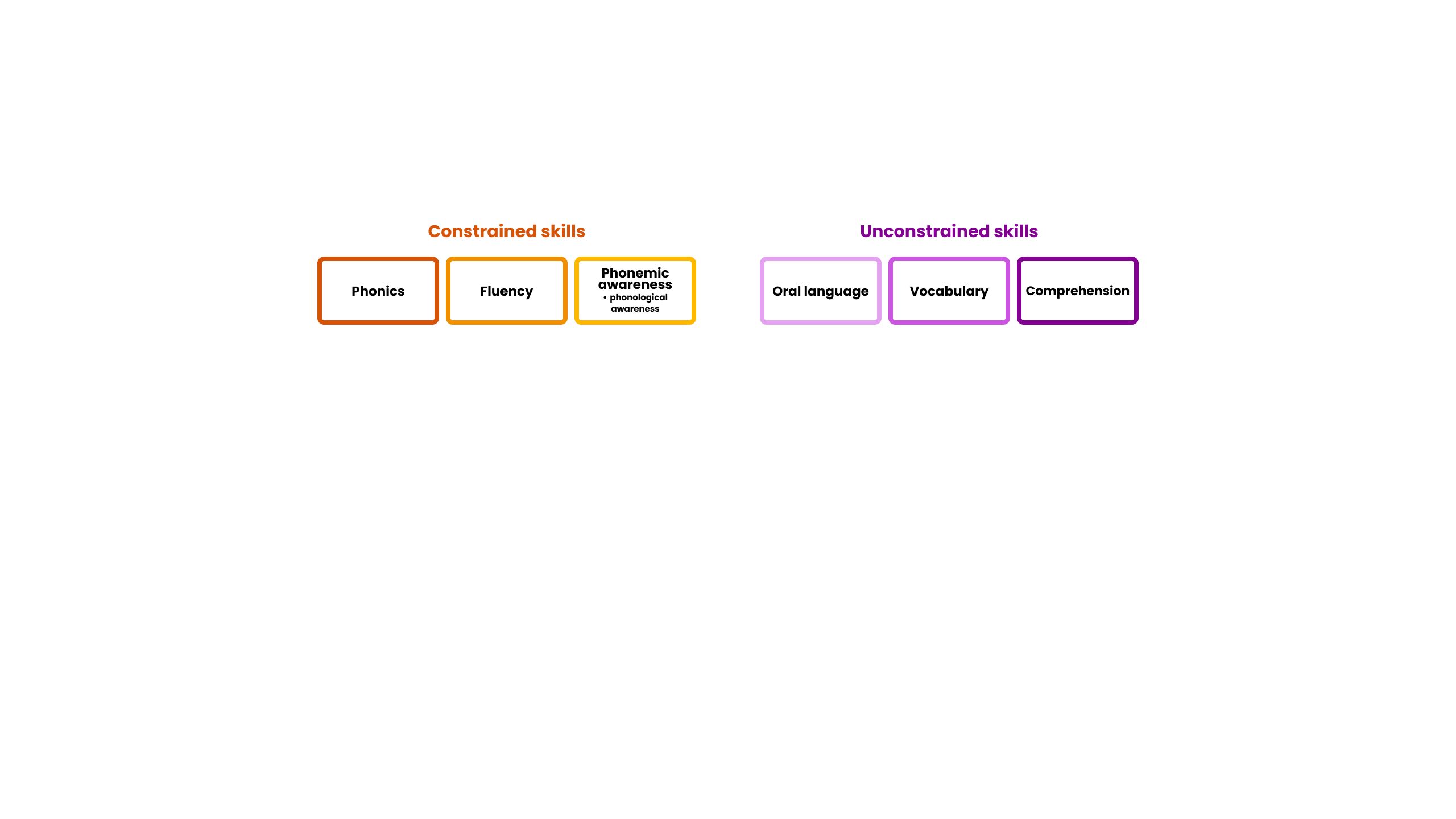
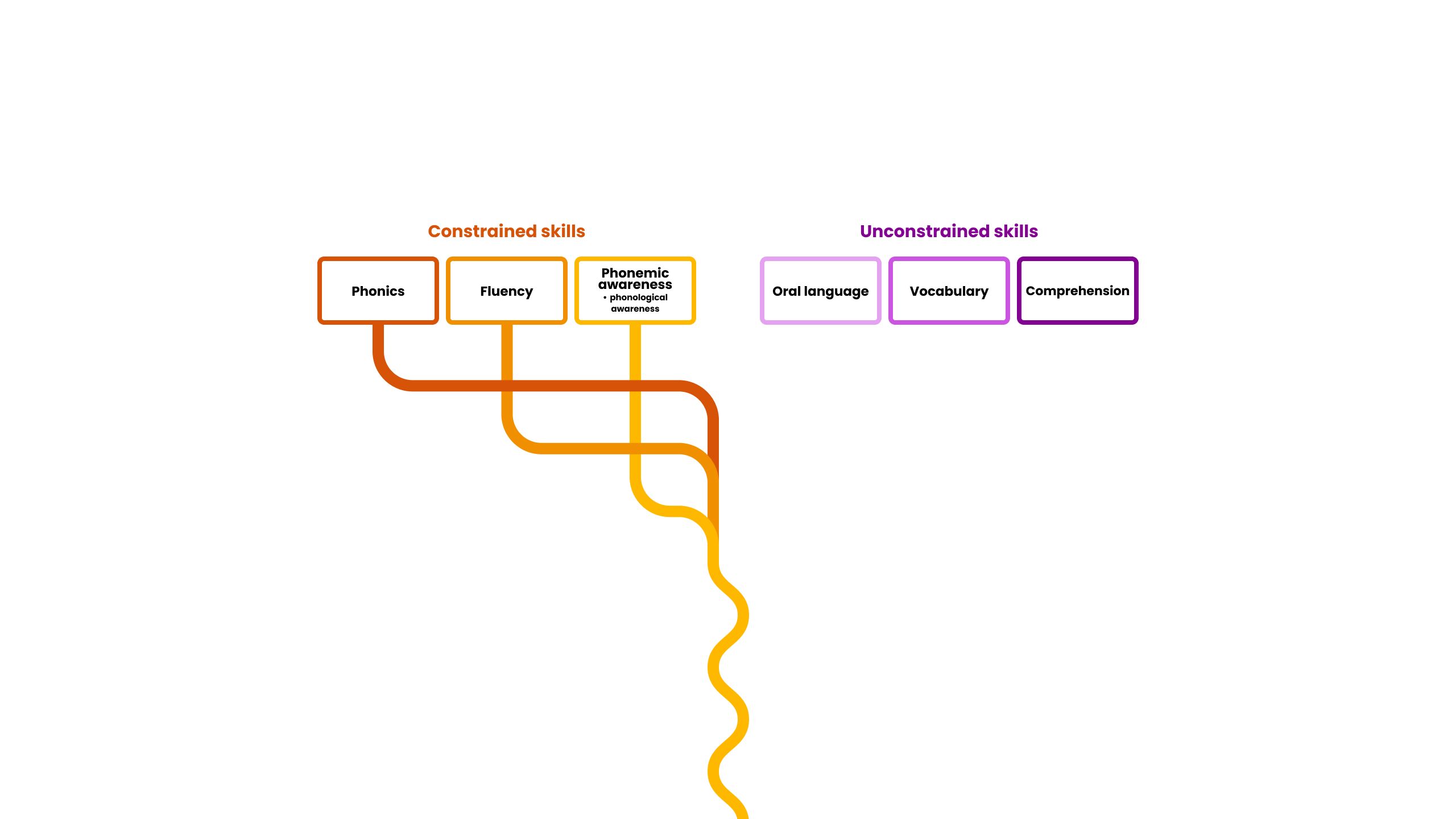
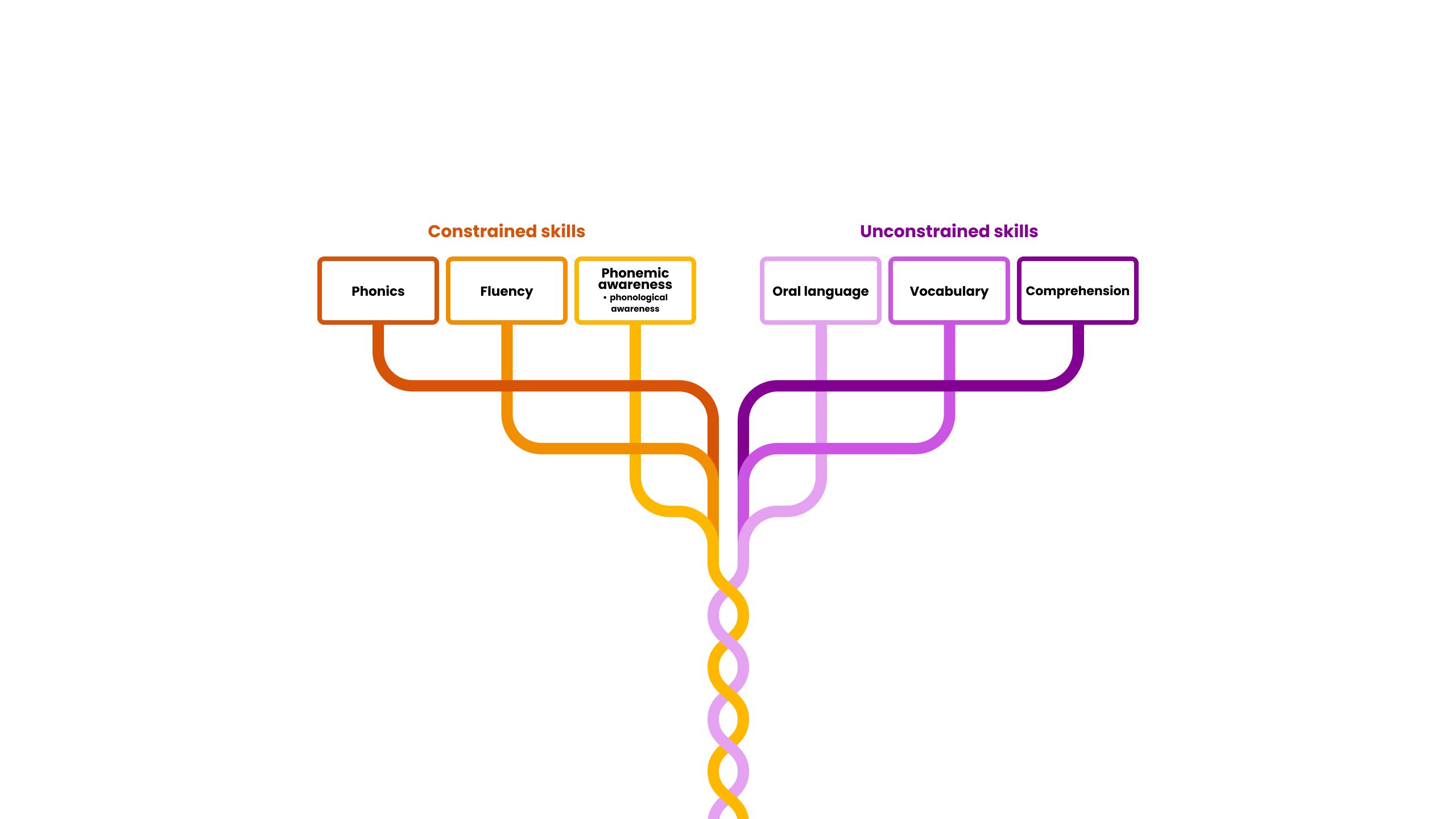
The Big 6 are interrelated skills that have different roles at different times in the development of early reading.
Some are constrained skills that are relatively quickly learned and largely mastered by the time a child starts reading independently.
Constrained skills include phonics, fluency and phonemic awareness, which is part of phonological awareness. They are fundamental to mastering reading. Phonemic awareness is considered a constrained skill because once it is learnt, it rarely needs to be taught again.
Others are unconstrained skills that require deep conceptual development and can continue to develop for the rest of the person's life (Turner et al., 2018).
Let’s explore phonological awareness first.
Phonological awareness
Phonological awareness and related skills allow learners to break speech into separate components. The phonological staircase shows us the range of different skills that make up phonological awareness. The most critical skill is phonemic awareness.
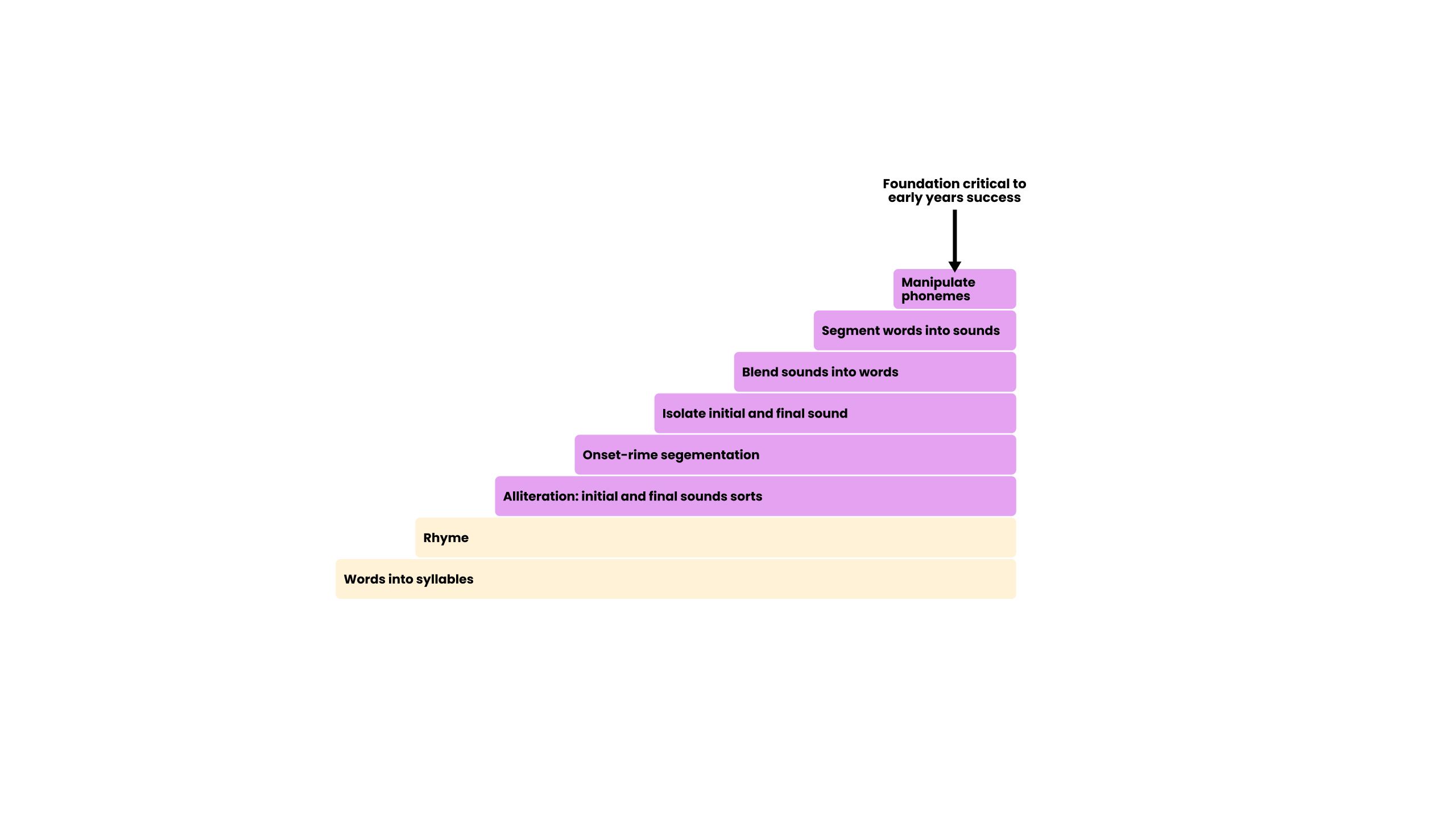
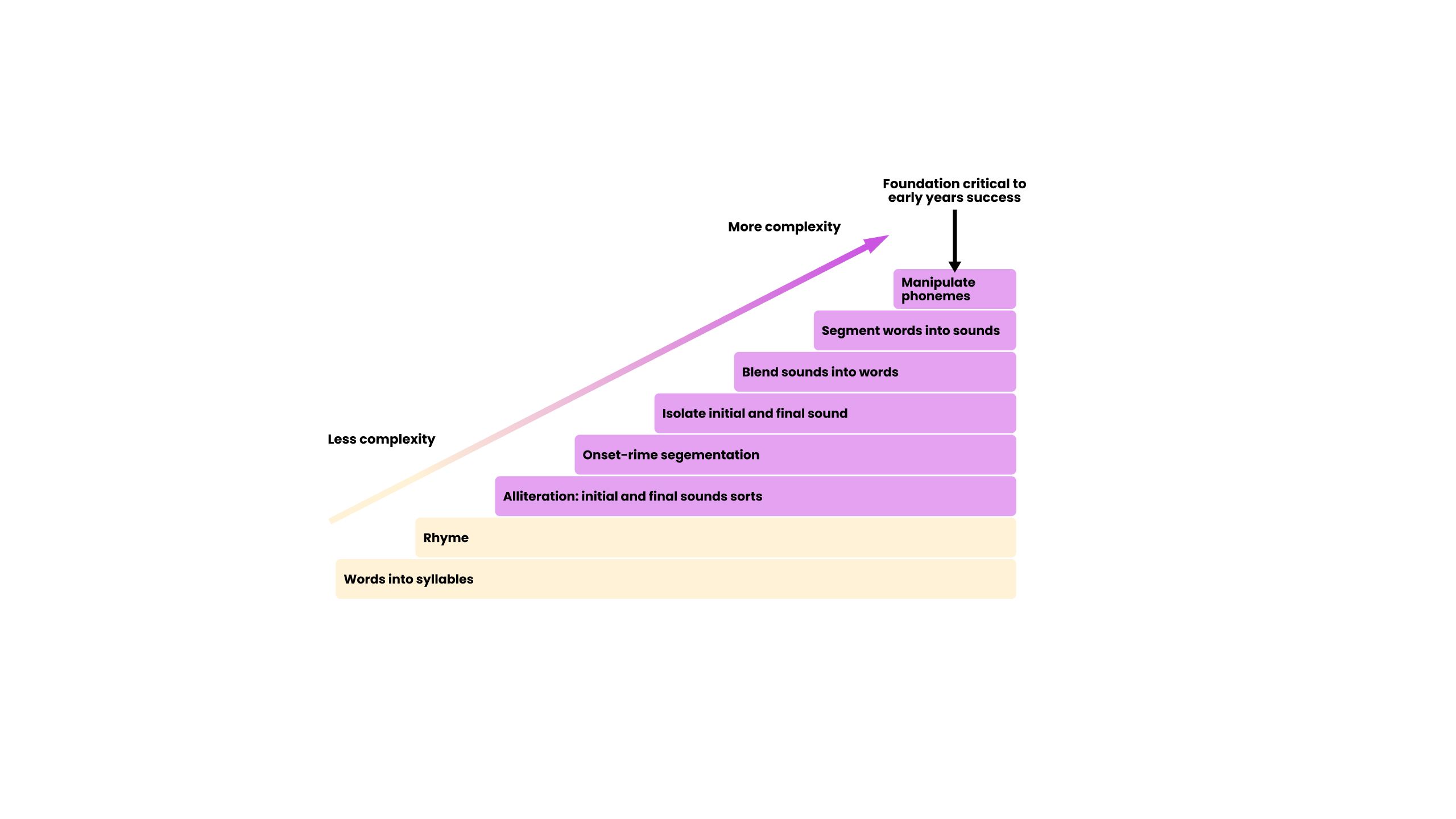


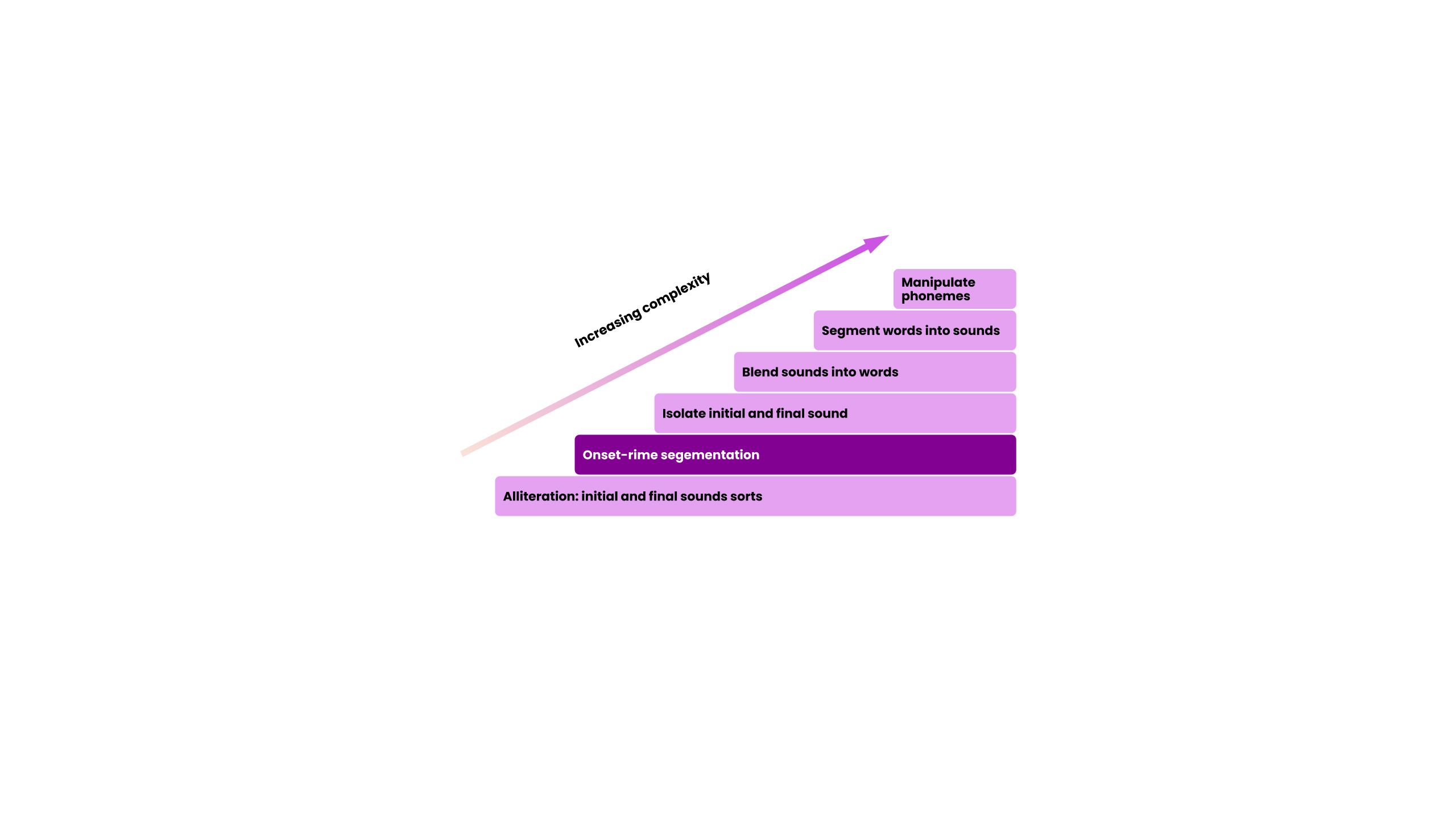

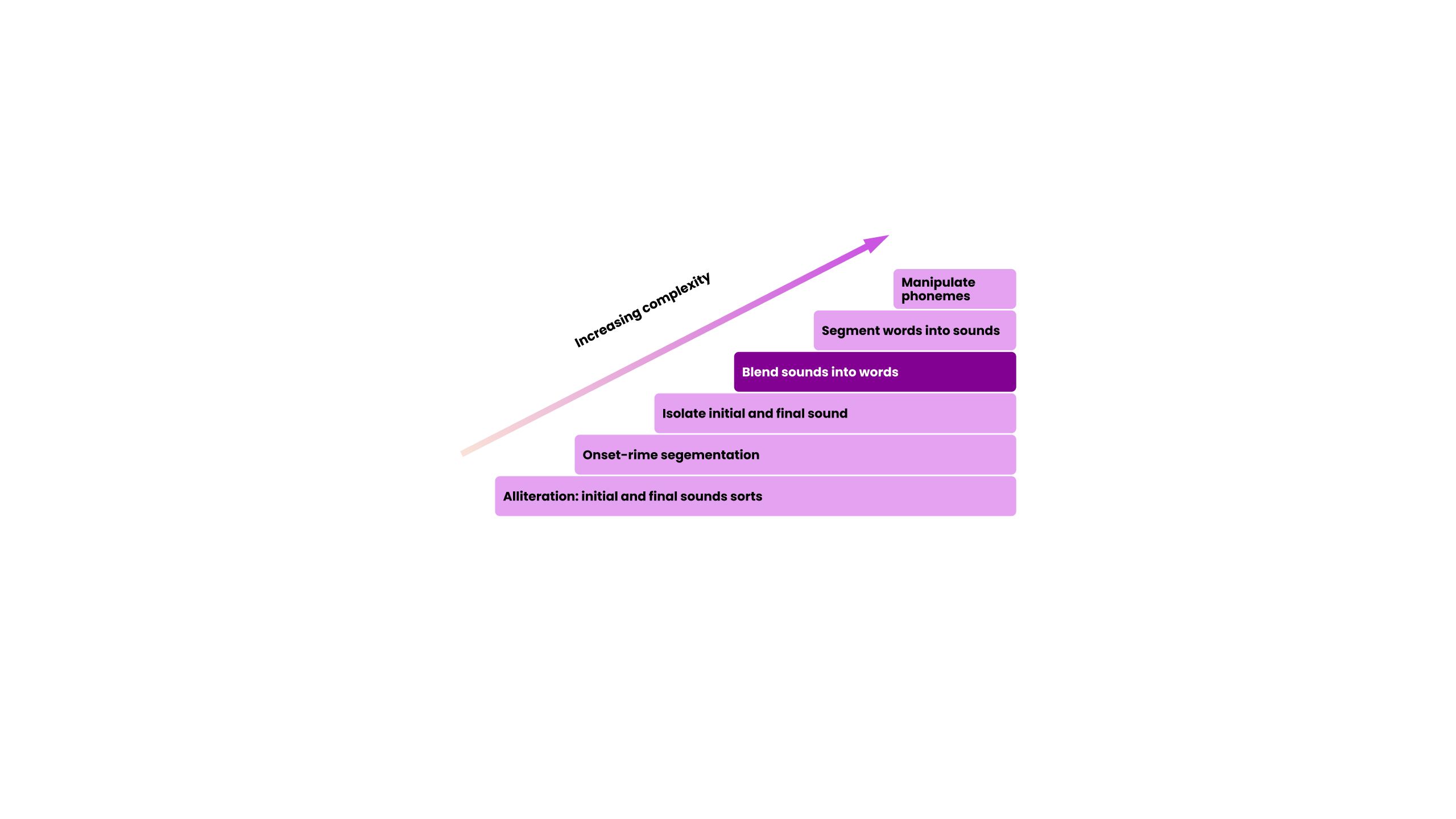
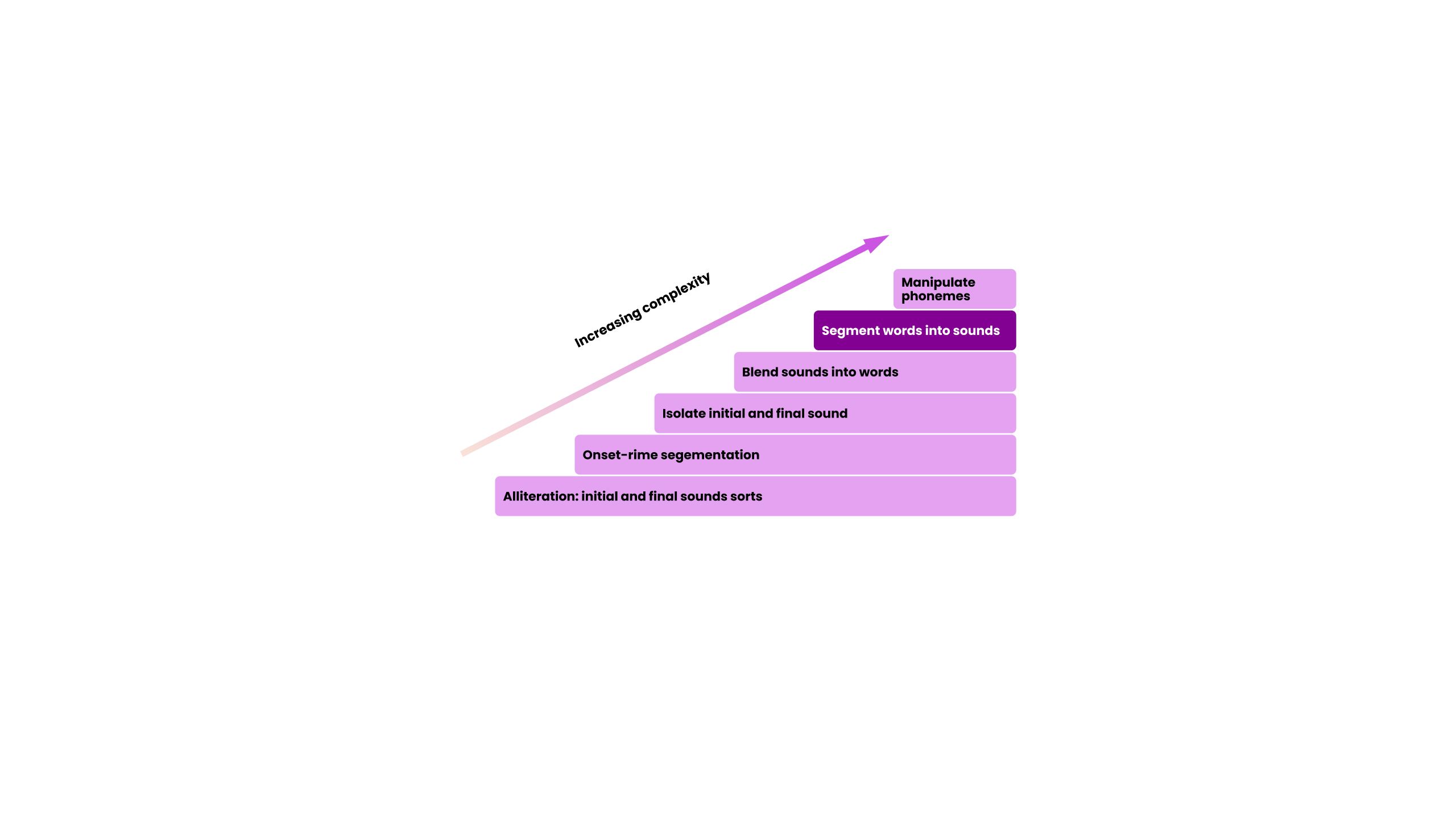
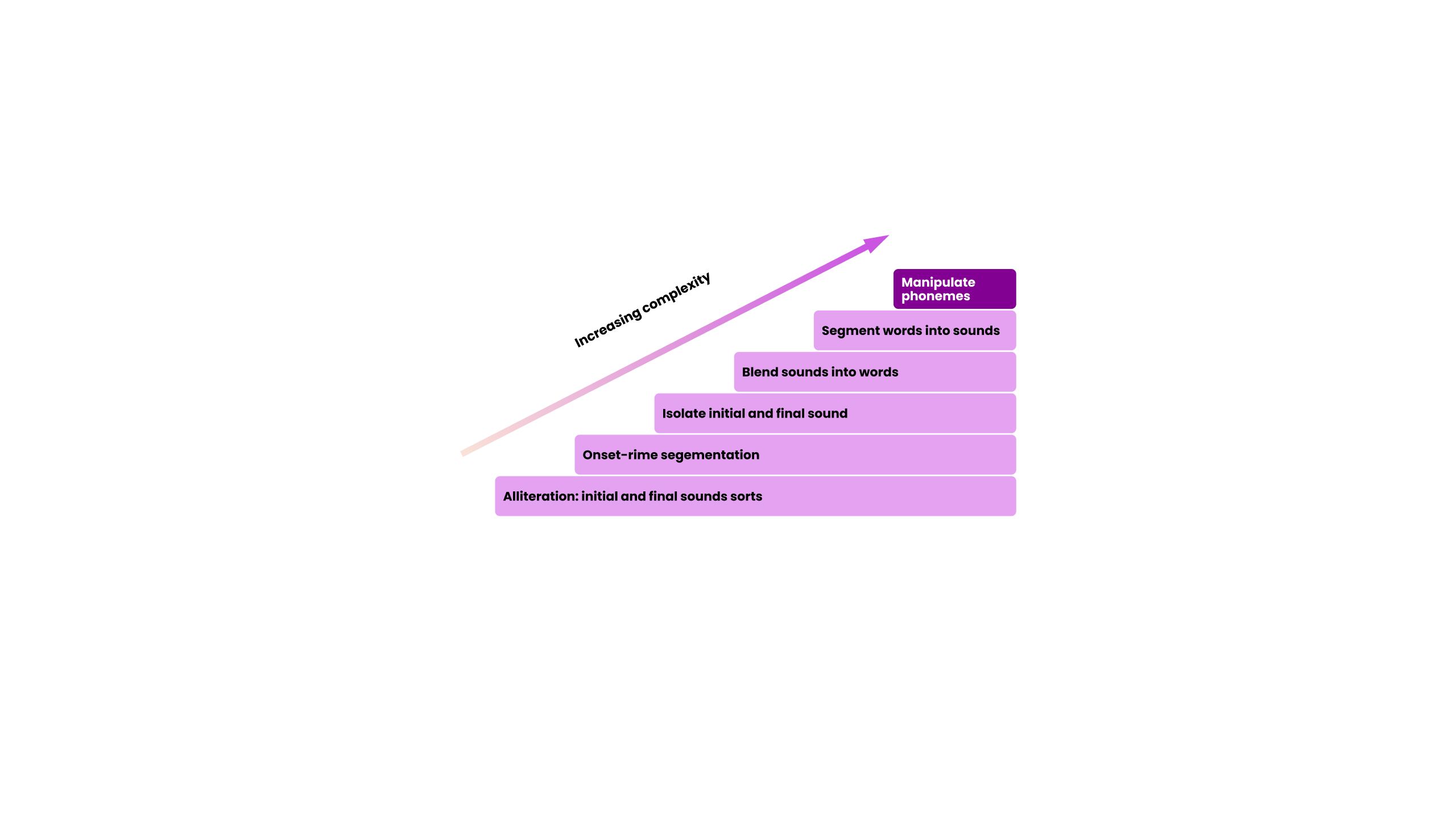
Phonemic awareness is the ability to break down and manipulate the individual sounds in spoken language (Stark et al., 2015).
Let’s look at the skills that make up phonemic awareness.
How does it develop?
Phonemic awareness generally begins with alliteration. When students can hear alliteration, they notice that words begin or end with the same sound, as in when they play ‘I spy’.
The next part of phonemic awareness is onset/rime. The onset of a word involves the consonant or consonants that precede the vowel in each word, such as the /l/ in ‘lick’ or the /br/ in ‘brat’. The rime is the part of a word or syllable after the onset which includes a vowel and following consonants, such as the /ick/ in ‘lick’ and /at/ in ‘brat’. Some words do not have an onset. For instance, ‘up’, ‘it’, and ‘on’ don’t have an onset – the whole word is rime.
Phoneme isolation involves students learning to articulate a specific sound, isolated from the word it is in. For example, hearing and saying the first sound in ‘wish’, is /w/ and the last sound in moss, is /s/.
Blending sounds into words involves making each of the sounds in order to say a word for example, /sh/ /igh/ /n/ blended together makes the word ‘shine’.
Segmenting words into sounds is the opposite of blending. It involves hearing each of the sounds, separating them out and saying them individually in order. For example ‘flock’ segmented is /f/-/l/-/o/-/ck/.
The most difficult phonemic awareness skill to master is manipulation of phonemes. This is the ability to delete sounds from words for example, saying ‘slap’, then repeating it without the /l/ so the word becomes ‘sap’. It also involves adding or swapping sounds, such as swapping the /o/ in ‘cot’ with an /a/ to make ‘cat’.
Phonics
Phonics is the ability to use letter–sound correspondence to read and write in an alphabetic language.
Phonics involves teaching the relationship between letters and their corresponding sounds. It is a constrained skill.
Research stresses that the systematic and explicit teaching of phonics is important regardless of the approach used, so children can work toward mastering reading and writing.
Phonics generally develops with a student reading letters in their name and familiar words, for example, ‘mum’. It also involves knowing letter names, common sounds as well as word families and blends such as ‘ad’ and ‘cl’ to common digraphs such as ‘th’.

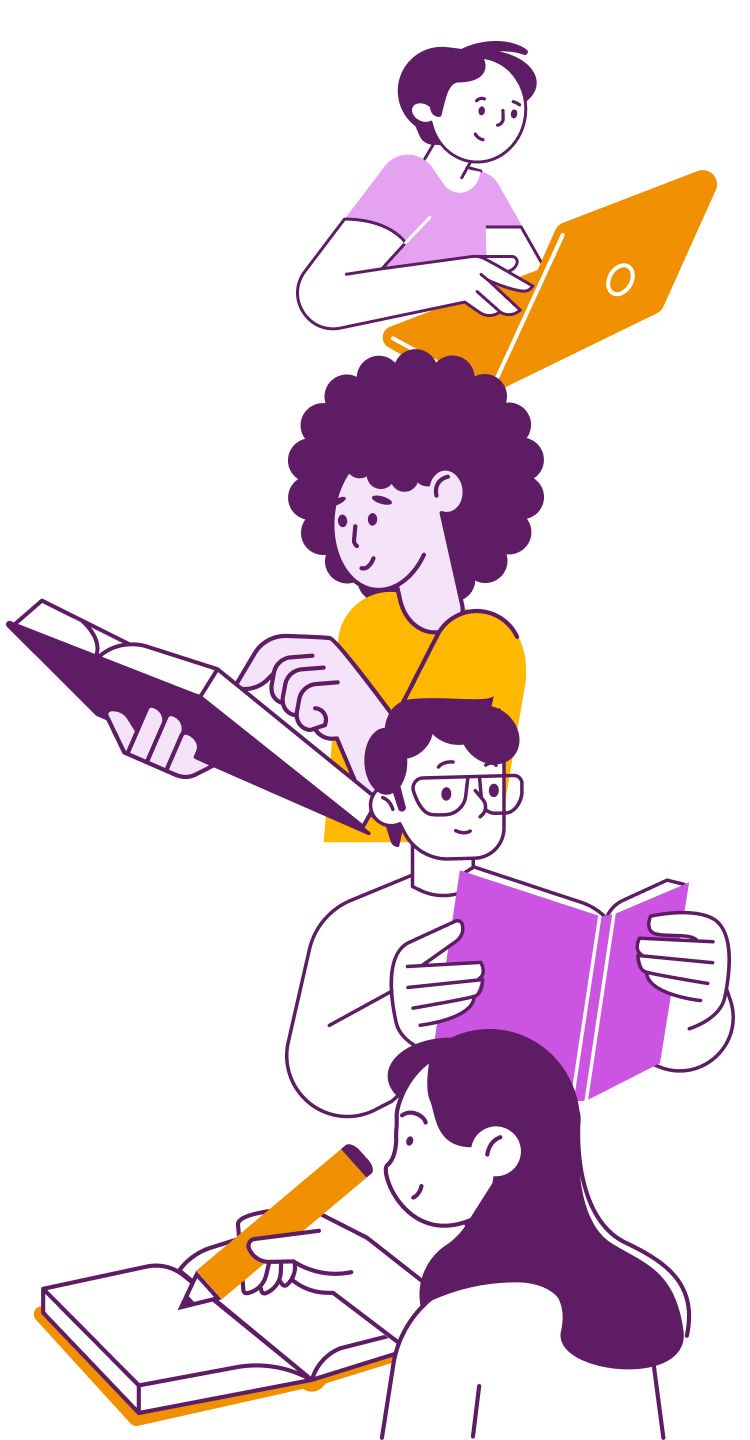
Decoding sounds to make
different words
Phonics helps children decode text so they understand that letters map to specific sounds. For example, if you know the 6 letter sounds shown, you can use your knowledge of relationships to read a range of other words.


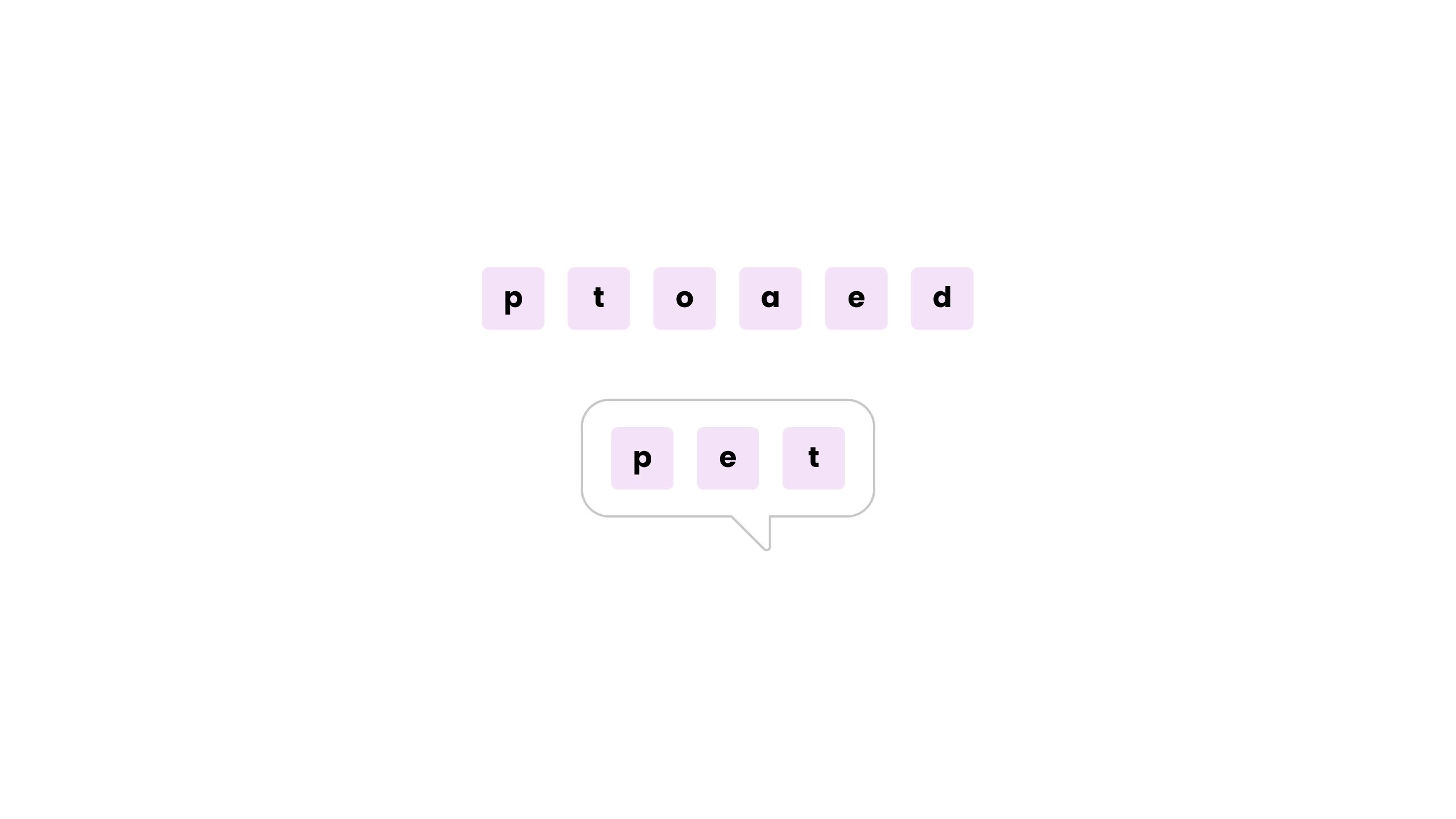


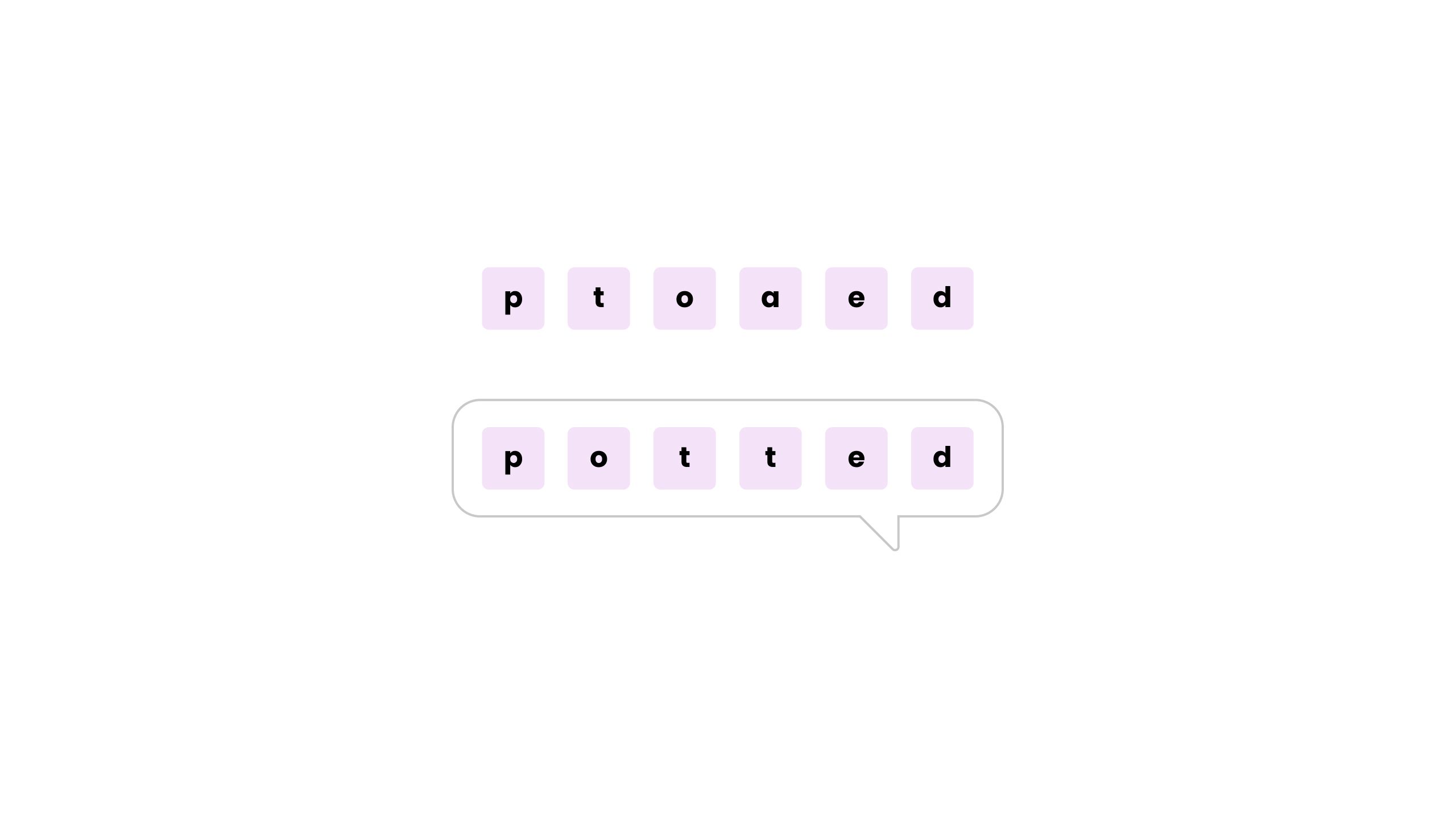
Fluency
Fluency involves reading aloud in a natural way that shows understanding of a text. Teaching fluency requires 3 key subskills to be considered: accuracy, speed and prosody. Of the Big 6 skills, fluency shows us how constrained skills influence meaning making.

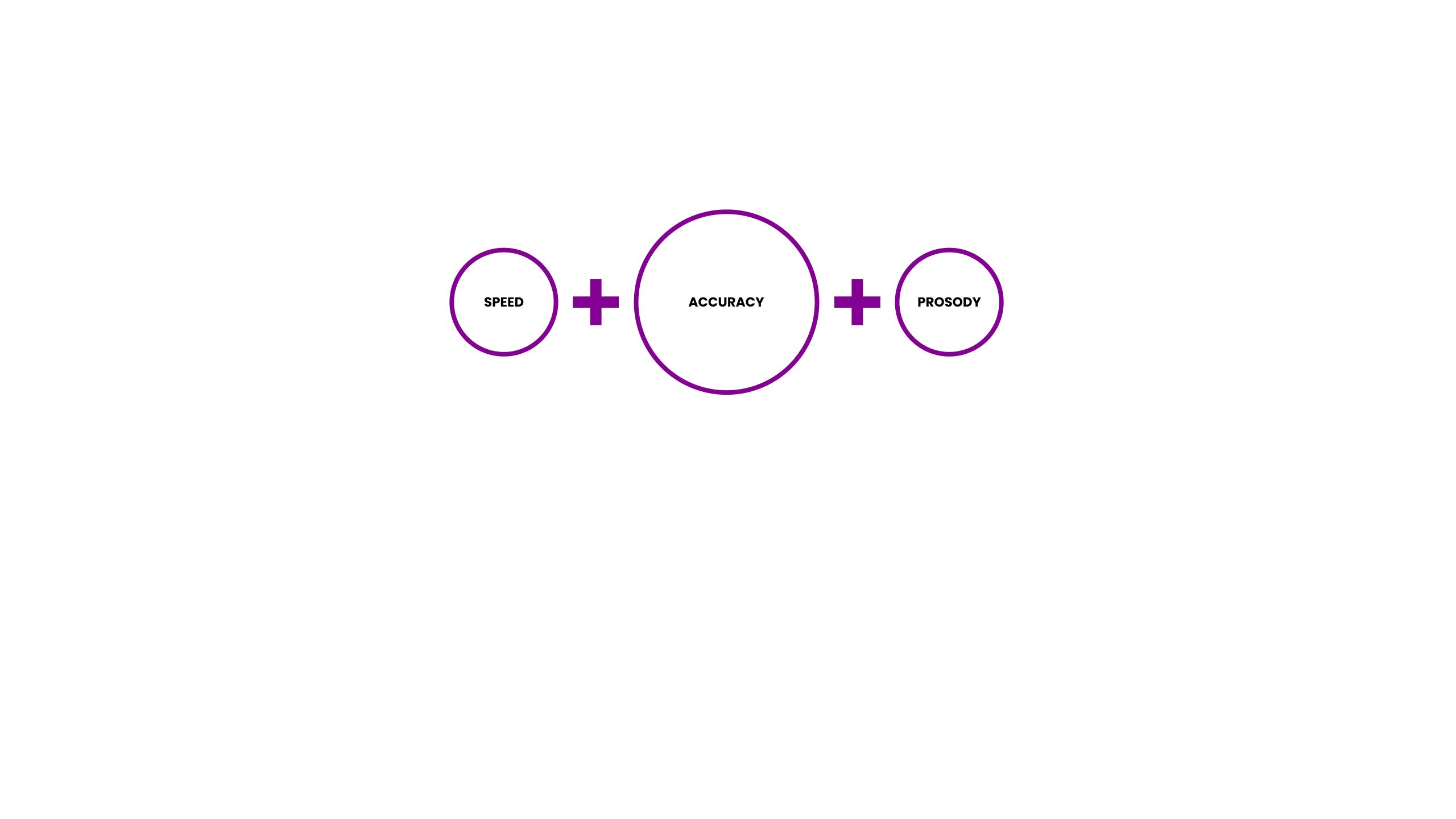
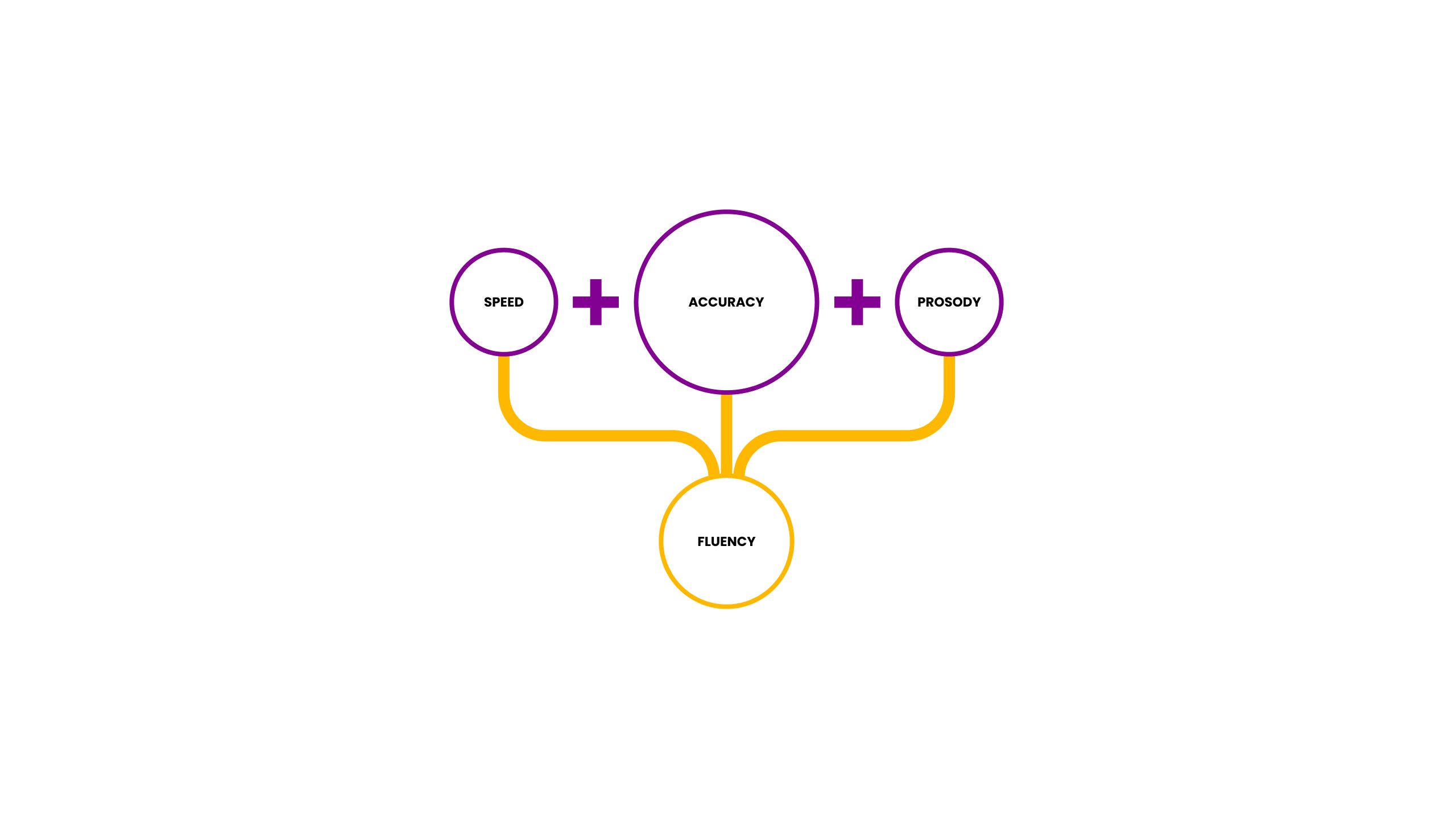
Accuracy for comprehension
Accurate reading of words supports comprehension and is a key feature of fluency.
Reading words accurately supports comprehension and is a key component of fluency.
The ideal speed
Fluent reading requires speed that is not too fast or too slow. The speed determines how many words can be read, which influences how many ideas a reader can access from the text as they read.
Prosody
Reading with expression occurs when readers can stress words at appropriate points as they read and group words into meaningful phrases.
Why is fluency important?
Being a fluent reader involves decoding words and automatically mapping meaning to their understanding of a concept. This could confirm a reader’s understanding, build on it, or change it. The process can happen quickly and efficiently when reading is fluent.
Unconstrained skills
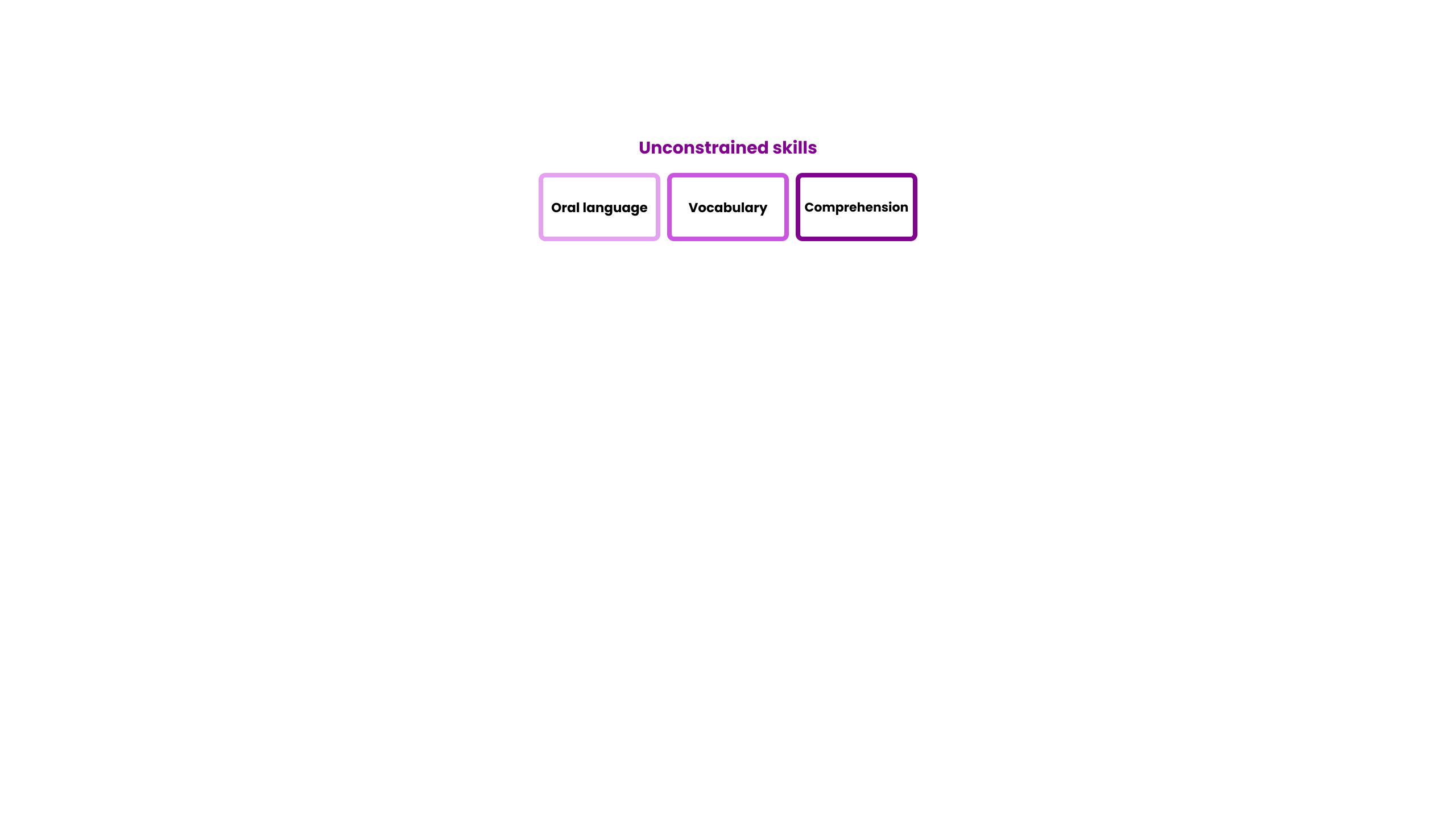
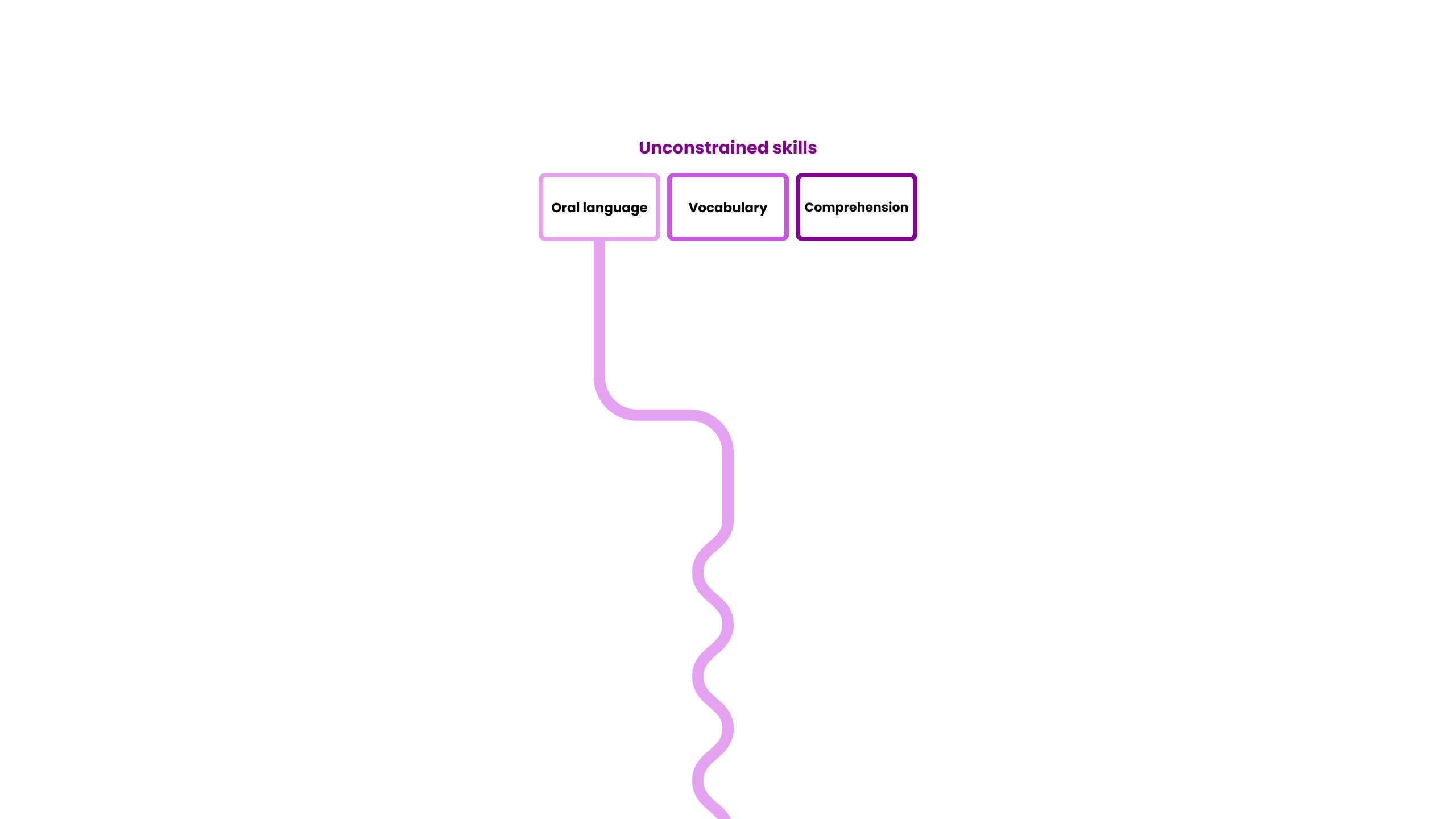
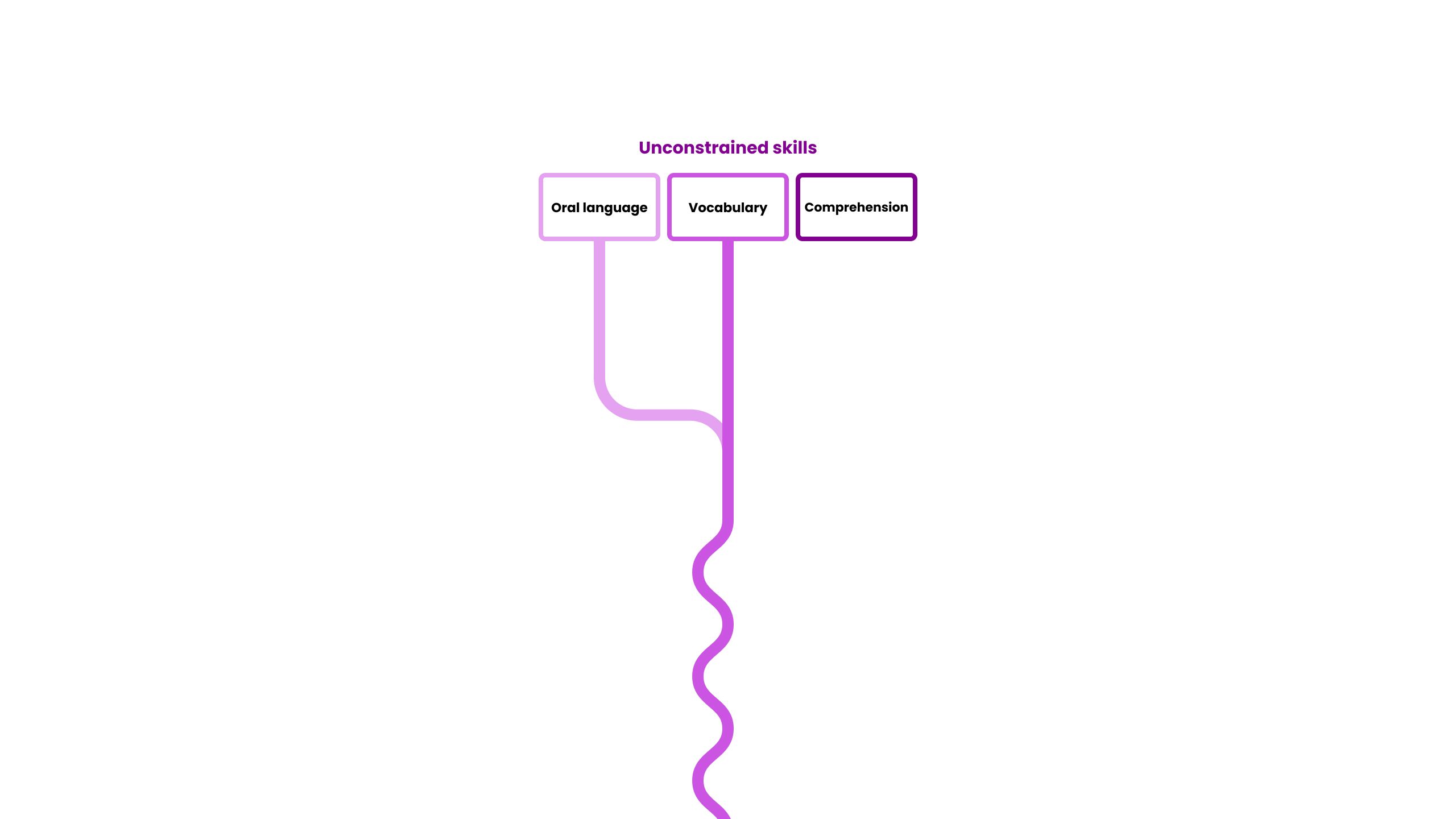
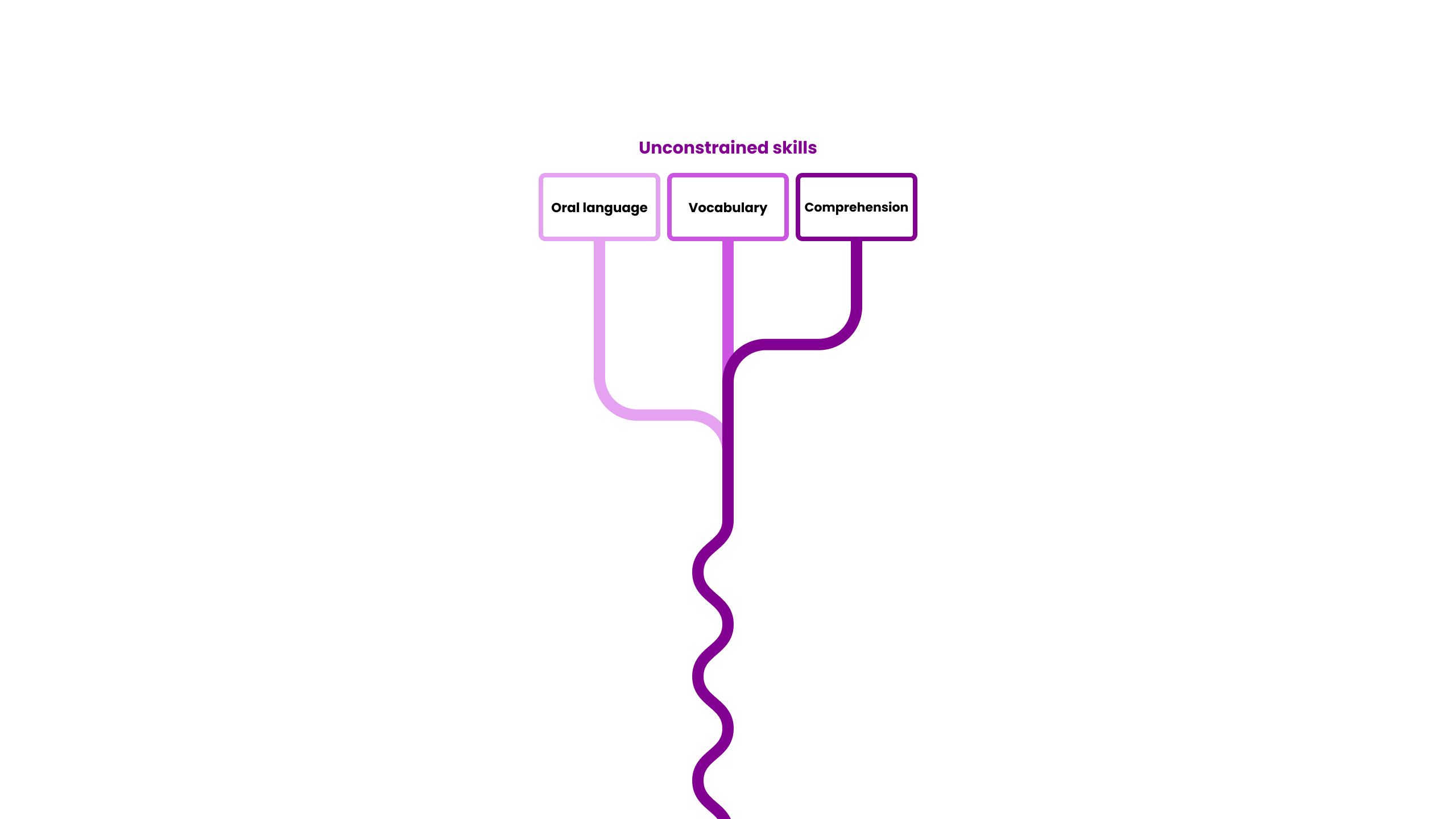
The unconstrained skills in the Big 6 are oral language, vocabulary and comprehension. They require deep conceptual development and can continue to develop for the rest of a child’s life. (Turner et al., 2018).
Oral language
Oral language is about understanding what is said and expressing what is thought, felt and required. It is foundational for effective communication.
Strong early language skills and effective communication are positively associated with learning abilities and success in life.
Teachers can develop students’ oral language skills by reading to them, leading conversations about quality texts and literature, modelling complex syntax, and using sophisticated vocabulary and colloquial language.
Vocabulary
A person's vocabulary is all the words they understand and use. Those with rich vocabularies read words more accurately because they develop more associations between words. Explicit and systematic instruction and language-rich environments can help grow a student’s vocabulary and understanding of ideas.
Comprehension is a complex and active process. It involves identifying words (decoding) and constructing meaning from them using language comprehension skills. From this process, a more sophisticated understanding emerges that builds cumulatively as an individual reads.
Empowering readers
The ability to read well enables anyone to learn and exchange knowledge, which contributes to a more fulfilling life, and better communities, workplaces and global citizenship. Reading opens windows into compelling narrative worlds, imaginative experiences and inspires creativity.
The science of reading is unpacked so that more teachers and learners can access the benefits of reading. In an adept teacher’s hands, the evidence supporting the science of reading is a powerful resource.

Further reading
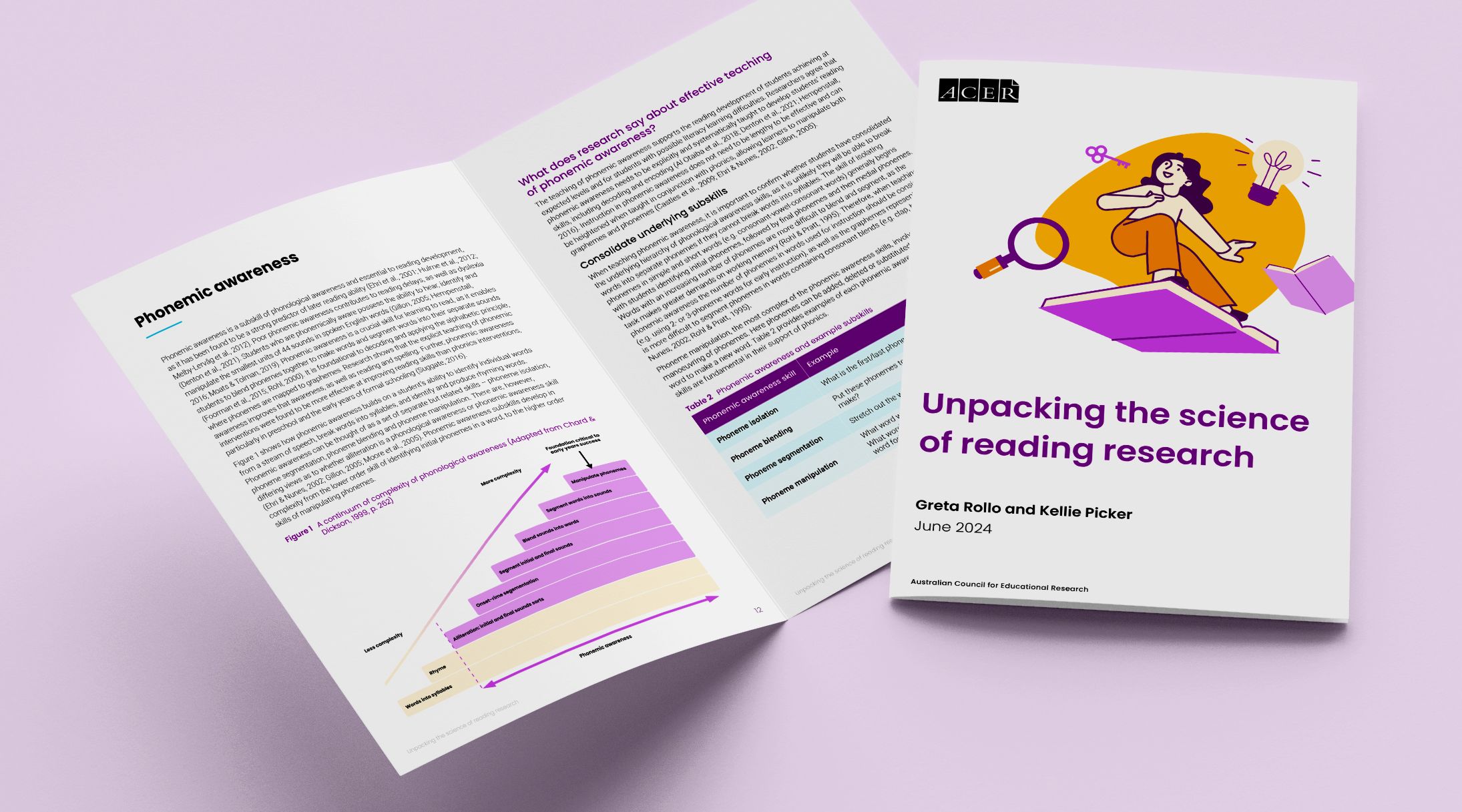
Unpacking the science of reading: literature review
Read the literature review that presents the research on the science of reading and the Big 6 pillars of learning to read.

Unpacking the science of reading:
what the research says
In the first of 3 articles in this Teacher Magazine series, Greta Rollo and Dr Kellie Picker provide an overview of the Big 6 pillars of learning to read.
Last updated on 11 July 2024.